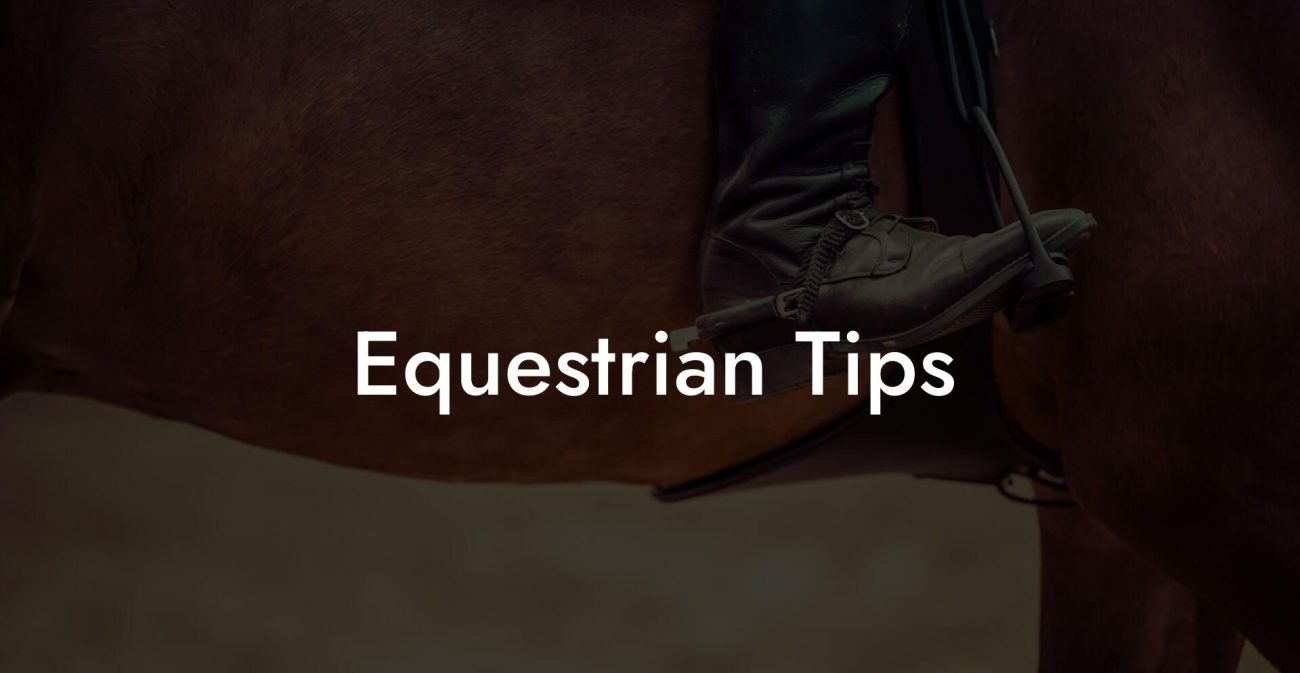Strutting into the world of equine excellence, the Quarter Horse isn’t just any four-legged friend, it’s an American icon with a personality as bold and dynamic as your favorite playlist. When you ask, “What does Quarter Horse mean?” you’re diving into a legacy steeped in versatility, speed, and a whole lot of heart. Whether you’re a millennial looking to bring some modern flair to your stable life or a Gen-Z equine enthusiast keen on ethical care and innovative training techniques, this guide is your passport to understanding, caring for, and celebrating one of the most beloved horse breeds in history.
Quick Links to Useful Sections
- Unpacking the Quarter Horse Legacy
- The Rich History and Evolution of Quarter Horses
- Understanding the Quarter Horse Breed Standard
- Distinctive Physical Attributes
- Temperament That Speaks Volumes
- Quarter Horse Genetics and Breeding: The Science Behind the Speed
- Caring for Your Quarter Horse: A Comprehensive Guide
- Daily Grooming and Hygiene
- Health Care and Veterinary Support
- Nutrition: Fueling the Speed Machine
- Exercise and Mental Stimulation
- Training Your Quarter Horse: From Basics to Brilliance
- Building a Trust-Based Relationship
- Effective Training Methodologies
- Advanced Disciplines and Competition Prep
- Quarter Horse equipment and Safety: Gear Up for Success
- Modern Tack and Equipment
- Safety First: Best Practices in Horse Handling
- Community and Digital Resources: Your Next Steps in Quarter Horse Mastery
- Resources and Community Support: Your Next Steps
- Integrative Case Studies: Celebrating Real-Life Quarter Horse Transformations
- Case Study 1: From Ranch Workhorse to Competition Champion
- Case Study 2: The Healing Power of Community and High-Tech Support
- Case Study 3: A Journey Toward Sustainable, Holistic Horse Care
- Equine Lifestyle and Beyond: Integrating Modern Trends in Quarter Horse Culture
- Quarter Horse Care: Practical Tips for Everyday Horsekeeping
- Morning and Evening Routines
- Seasonal Care Adjustments
- Innovative Grooming and Maintenance Techniques
- Quarter Horse Care FAQs: Your Burning Questions Answered
- Your Journey to a Thriving Quarter Horse Lifestyle
Unpacking the Quarter Horse Legacy
The term “Quarter Horse” might give off connotations of time, length, or even affordability, but these horses embody so much more than a fractional measurement. Born from a history of hard work and raw athleticism, Quarter Horses have been the backbone of ranching, rodeo, and competitive sports for centuries. Their name comes from their incredible ability to sprint a quarter of a mile faster than any other horse breed, no capes, no superpowers, just pure, unadulterated speed.
Beyond their quick bursts of power, Quarter Horses rock a personality that’s as engaging as it is dependable. They’re known for their calm demeanor when handling daily tasks, but when it’s time to get moving, they transform into agile athletes that are the envy of equestrian circles. Understanding what a Quarter Horse really means is not just about acknowledging its historical significance; it’s also about celebrating a horse breed that epitomizes the perfect balance between grace, grit, and adaptability.
In today’s fast-paced world where trends evolve at the speed of your social media feed, Quarter Horses remain a timeless symbol of resilience and practicality. Whether you’re riding trails with a squad of friends or engaging in high-energy competitions, learn how these majestic creatures continue to bridge the gap between tradition and modernity.
The Rich History and Evolution of Quarter Horses
How did Quarter Horses become the epitome of American size and speed? It all starts with a fascinating history that traces back to the early Spanish settlers who brought horses to the New World. Over time, natural selection and targeted breeding practices refined these descendants into the agile, powerful animal we know today.
During the 18th and 19th centuries, as settlers expanded into the vast plains of America, the need for a quick, nimble horse that could handle the unpredictable challenges of frontier life became apparent. Ranchers began selectively breeding horses that could excel in spur-of-the-moment sprints, cattle drives, and short bursts of speed, thus giving birth to the Quarter Horse.
Today, Quarter Horses dominate a variety of disciplines, ranging from western pleasure riding and barrel racing to cutting and reining competitions. Their robust build and intelligent nature have made them a favorite among both professional riders and weekend warriors. In an era where authenticity meets innovation, these horses have managed to remain both historically significant and trailblazingly modern.
The story of Quarter Horses is not just about winning races or handling cattle, it’s about embodying the spirit of determination, versatility, and adaptability. This breed has managed to thrive in countless roles, appealing to a wide range of equestrians who value tradition as much as cutting-edge training techniques.
Understanding the Quarter Horse Breed Standard
When we say “Quarter Horse,” we’re talking about a specific set of characteristics that make these horses instantly recognizable. From their compact, muscular build to their agile, explosive speed, there are several physical and temperament traits that set them apart from their peers.
Distinctive Physical Attributes
Quarter Horses are renowned for their strong, muscular bodies and powerful hindquarters; these traits enable them to achieve impressive acceleration over short distances. With a sturdy build, a deep chest, and a short, broad head, these horses are designed for functional performance rather than showy aesthetics. Their conformation is a perfect blend of athleticism and practicality, making them ideal for everything from ranch work to competitive riding.
One of the most appealing aspects of the Quarter Horse is its versatility in color and build. You’ll find them in a dazzling array of shades, sorrel, bay, black, and even roan, each carrying a unique flair that reflects the rich tapestry of American equine history.
Temperament That Speaks Volumes
In addition to their physical prowess, Quarter Horses are celebrated for their gentle yet spirited disposition. They are known for their calm under pressure, quick decision-making abilities, and calm, approachable demeanor. For riders new and experienced alike, this temperament translates to a reliable and cooperative partner, making them a popular choice in both family settings and competitive arenas.
What truly elevates the Quarter Horse is its adaptability to various training techniques and environments. Whether you’re training for a high-stakes competition or enjoying a casual weekend ride, these horses are eager to learn, respond well to positive reinforcement, and are downright fun to work with.
Quarter Horse Genetics and Breeding: The Science Behind the Speed
The genetic makeup of a Quarter Horse is a tale of evolution and careful breeding. Modern Quarter Horses are the result of decades of selective breeding aimed at enhancing particular traits such as speed, agility, and a calm demeanor. Breeders often look for horses that not only meet the physical criteria but also possess an innate ability to connect with their riders.
Genetic diversity within the breed is a treasure trove for anyone passionate about equine care and performance. By examining bloodlines and understanding the heritage of these horses, owners can gain insight into potential performance traits, behavioral tendencies, and even health predispositions. For instance, a well-bred Quarter Horse might inherit a strong work ethic, excellent muscle tone, and an affable, responsive character that makes training less of a chore and more of a collaborative adventure.
In the era of genomics and personalized care, modern breeders and horse owners alike are tapping into genetic studies that offer invaluable information on disease prevention, dietary needs, and optimal training protocols. By harmonizing age-old breeding traditions with cutting-edge science, we’re witnessing a renaissance in how Quarter Horses are raised, cared for, and celebrated.
Caring for Your Quarter Horse: A Comprehensive Guide
Whether you’re a prospective owner or already sharing your life with a Quarter Horse, understanding how to care for these remarkable creatures is key. From grooming and health care to nutrition and exercise, every aspect of horse care plays a vital role in ensuring your equine friend remains happy, healthy, and ready for adventure.
Daily Grooming and Hygiene
Keeping your Quarter Horse in tip-top shape starts with regular grooming. Think of it as a spa day every day, your horse’s coat, mane, and tail need routine brushing to remove dirt, dust, and loose hair. Not only does this help maintain a shiny, healthy coat, but it also provides an excellent opportunity to check for any skin irritations, cuts, or unusual bumps.
For a modern twist on an age-old practice, many riders have embraced eco-friendly grooming products. From all-natural shampoos to biodegradable brushes, these innovative solutions ensure that while you’re keeping your horse looking fresh, you’re also doing your bit for the planet.
Health Care and Veterinary Support
Just like us, our equine companions need regular checkups to stay in peak condition. Routine visits to the veterinarian for vaccinations, dental checks, and overall health screenings are a must. With advances in veterinary medicine, many practices now offer digital records and state-of-the-art diagnostic tools, making it easier than ever to monitor your horse’s health and spot any potential issues early on.
From managing common ailments like thrush and colic to exploring cutting-edge treatments for joint issues and laminitis, staying informed about the latest in equine health care is essential for any Quarter Horse enthusiast. And in today’s era of online resources, you can often access expert advice with just a few clicks.
Nutrition: Fueling the Speed Machine
A well-fed Quarter Horse is a happy, high-performing horse. Their diet should be balanced with quality forage, grains, and supplements tailored to their specific needs. Emphasize high-fiber diets, especially if your horse is more sedentary, and ensure there’s always clean, fresh water available to keep them hydrated.
Think of it as a gourmet meal plan, ranging from pasture grazing to specially formulated feeds that complement your horse’s activity level. Modern nutritional strategies also highlight organic and non-GMO feeds, appealing to a generation that values sustainability and ethical food sourcing. Consult with equine nutritionists for personalized meal plans that maximize your horse’s performance without compromising on health.
Exercise and Mental Stimulation
Quarter Horses thrive on movement, whether it’s a vigorous round of barrel racing or a leisurely trail ride. Regular exercise not only strengthens their muscles and maintains cardiovascular health, but it also provides an essential outlet for mental stimulation. Rotate routines, introduce new obstacles, and keep your training sessions fun and varied. This approach not only strengthens your horse’s body but also fosters a trusting, interactive bond between you and your equine partner.
In addition to physical activities, mental enrichment through interactive toys, varied terrains, and even occasional socialization with other horses can help keep boredom at bay, ensuring your Quarter Horse remains engaged, curious, and ready to learn.
Training Your Quarter Horse: From Basics to Brilliance
Training a Quarter Horse involves a blend of tradition, modern techniques, and a sprinkle of that special connection between horse and human. Whether you’re a first-timer or a seasoned rider, the key to successful training lies in positive reinforcement, clear communication, and consistency.
Building a Trust-Based Relationship
At the heart of any great training program is trust. Spend quality time with your horse outside of structured training sessions. Engage in casual rides, gentle grooming sessions, and even a bit of play. These moments build a foundation of trust and mutual respect that will make formal training much more effective.
Modern trainers suggest that bonding is not a one-size-fits-all process. Experiment with different techniques until you discover what truly clicks with your Quarter Horse. Use treats, kind words, and a touch of humor to keep your sessions light-hearted and enjoyable.
Effective Training Methodologies
Today’s training methodologies marry the best aspects of classical horsemanship with innovative, research-backed techniques. For example, clicker training is gaining traction as a fun, interactive way to communicate with your horse. It’s all about timing and positive feedback, much like training a playful pet, but on a majestic scale.
Another tip? Keep your training sessions short and sweet. A focused 15-20 minute session can be far more effective than a drawn-out hour of tireless work. Your horse is capable of amazing focus when motivated correctly and with plenty of variety to keep things interesting.
Advanced Disciplines and Competition Prep
For those looking to take competitive riding to the next level, Quarter Horses excel in disciplines like barrel racing, reining, and cutting. Advanced training may include obstacle courses, speed drills, and precision maneuvers designed to showcase your horse’s impressive athleticism.
Preparation for competitions also involves mental conditioning. Techniques such as visualization, calming routines, and even equine massage therapy are becoming popular among professionals. These practices help reduce anxiety, fine-tune muscle memory, and ultimately lead to stellar performance when it counts the most.
Quarter Horse equipment and Safety: Gear Up for Success
The right gear not only elevates your horse’s performance but also ensures safety and comfort for both you and your equine buddy. From bridles to saddles, every piece of equipment plays a vital role in your riding experience.
Modern Tack and Equipment
Today’s tack designs are a perfect blend of tradition and innovation. Think high-tech materials that are lightweight yet durable, ergonomic fits that reduce strain on your horse’s back, and stylish designs that make a statement in the arena. When choosing equipment, always prioritize fit and functionality, your horse’s well-being is paramount.
Whether you’re upgrading your stable’s tack or looking to invest in premier riding gear, research products that incorporate modern advancements such as moisture-wicking linings, anti-microbial padding, and adjustable features. Your Quarter Horse’s comfort directly influences its performance and willingness to engage in training and competitions.
Safety First: Best Practices in Horse Handling
While gearing up with the latest tech is exciting, safety should always come first. Regularly inspect your equipment for wear and tear and ensure that everything is properly maintained. Use safety gear like helmets, boots, and protective vests, both for you and, when appropriate, for your horse.
In addition, creating a safe environment in your stable or riding area is essential. Keep fences in good repair, provide ample lighting in stables, and always have a first-aid kit on hand. Staying prepared transforms routine riding sessions into secure, enjoyable adventures.
Community and Digital Resources: Your Next Steps in Quarter Horse Mastery
One of the most exciting aspects of the Quarter Horse world is the thriving community that shares insights, resources, and a passion for these majestic animals. The equestrian community has embraced digital platforms like social media, online forums, and webinars where modern techniques in horse care, training, and breeding are discussed and celebrated every day.
For the tech-savvy owner, there are numerous apps designed to help manage everything from feed schedules and exercise logs to veterinary records. These digital tools bridge tradition with modern convenience, letting you track your Quarter Horse’s progress and even connect with experts remotely.
Additionally, many local riding clubs, stables, and equestrian centers host events, clinics, and workshops. These gatherings provide an excellent opportunity to network with other enthusiasts, share stories, and learn about the latest trends in Quarter Horse care and training.
Resources and Community Support: Your Next Steps
Ready to take the reins and dive deeper into the world of Quarter Horses? Start by joining online groups on Facebook, Reddit, or specialized equine forums where fellow owners share valuable tips and personal experiences. Look out for webinars hosted by renowned equine experts who can offer out-of-the-box training ideas and breakthrough care practices.
Don’t forget to explore local equestrian centers and participate in riding events to meet like-minded enthusiasts. Whether you’re interested in learning advanced training techniques, adopting state-of-the-art equine technology, or simply wanting to swap stories from the stable, the community is here to cheer you on.
The journey of mastering Quarter Horse care is as much about the bonds you build as it is about riding technique. Embrace the camaraderie, share your wins (and the occasional fails), and remember, every day in the saddle is a chance to learn, laugh, and grow.
Integrative Case Studies: Celebrating Real-Life Quarter Horse Transformations
If you’re wondering how integrating modern care methodologies has transformed Quarter Horse management, check out these diverse case studies that highlight real-life success stories.
Case Study 1: From Ranch Workhorse to Competition Champion
Meet Dakota, a Quarter Horse with humble ranch beginnings who evolved into a star competitor in barrel racing. Dakota’s owner combined traditional feeding routines with customized, tech-driven exercise regimens and state-of-the-art equipment to enhance the horse’s agility and strength. With a firm emphasis on digital tracking and nutritional optimization, Dakota’s transformation became a runaway success story that underscores the power of blending old-school ranching values with modern science and technology.
Case Study 2: The Healing Power of Community and High-Tech Support
When Luna, a spirited Quarter Horse, suffered from a minor injury that threatened her participation in local competitions, her owner turned to an integrative approach that combined veterinary expertise, personalized physical therapy sessions, and the collective wisdom of an online community of equine experts. By using wearable technology to monitor recovery and engaging in targeted exercises, Luna not only bounced back but also returned stronger and even more spirited, a lesson that high-tech, well-informed care can turn setbacks into comebacks.
Case Study 3: A Journey Toward Sustainable, Holistic Horse Care
In a heartwarming tale of sustainable care, a young equestrian enthusiast, Jamie, set out to create an eco-friendly stable for her beloved Quarter Horse, Apollo. By integrating organic feed, natural grooming products, and environmentally safe cleaning habits, Jamie built a sanctuary that mirrored her passion for sustainability. Apollo thrived under this regime, exhibiting increased energy levels and improved overall health, a living testament to the power of holistic, eco-conscious horse care.
These case studies show that whether you’re aiming for competitive excellence, a speedy recovery, or an environmentally sustainable lifestyle, the secrets to successful Quarter Horse care lie in a balanced, integrative approach that values tradition while embracing innovation.
Equine Lifestyle and Beyond: Integrating Modern Trends in Quarter Horse Culture
The lifestyle surrounding Quarter Horses is ever-evolving. Modern equestrians are redefining what it means to care for and celebrate a heritage breed while infusing every aspect of equine management with technology, sustainability, and a touch of personal style.
Whether it’s through ergonomic stable designs, interactive training sessions streamed online, or even VR-assisted riding simulations, every day brings new ways to optimize your horse’s performance and well-being. Influencers and trendsetters in the equine world are showcasing a lifestyle that’s as much about community, creativity, and ethical practices as it is about performance on the arena.
From eco-friendly stables to digital journals tracking every gallop and stride, modern owners are crafting a fresh narrative that fuses cutting-edge trends with age-old values of respect, care, and passion. The Quarter Horse stands as a symbol of this dynamic blend, a breed that respects its roots while galloping fearlessly into the future.
Jump on board with the revolution that celebrates both heritage and innovation. Embrace a lifestyle that’s interactive, informed, and truly empowering. Because in the world of Quarter Horses, every stride forward is a testament to the perfect equilibrium between past wisdom and future vision.
Quarter Horse Care: Practical Tips for Everyday Horsekeeping
Now that you’re familiar with the history, genetics, training techniques, and modern lifestyle trends surrounding Quarter Horses, it’s time to dive into some practical, actionable advice for daily horse care. Whether you’re setting up a new stable or fine-tuning the routines of a long-time companion, here are some no-nonsense tips to ensure your Quarter Horse leads a life of peak performance and comfort.
Morning and Evening Routines
Start each day with a consistent routine that includes a thorough grooming session, a health check, and a pre-ride warm-up. Greet your horse with a gentle pat and a few kind words, this is as much about emotional well-being as it is about physical care.
In the evening, after a good ride or training session, cool down with light stretching and reflect on what worked and what could be improved. Modern equestrians swear by digital logs to track your horse’s daily performance, feeding times, and even mood, helping you fine-tune routines and spot patterns before minor issues become major concerns.
Seasonal Care Adjustments
Don’t forget that caring for your Quarter Horse involves adapting to seasonal changes. In the sweltering heat of summer, ensure your stable is well-ventilated and your horse has constant access to water and electrolyte supplements. During the winter months, invest in appropriate blankets and adjust feeding routines to account for changes in energy expenditure.
Seasonal changes also bring new challenges like muddy trails and increased risks of respiratory issues. Regularly clean and disinfect your stable, update your horse’s vaccines as recommended by your vet, and always be on the lookout for signs of discomfort during extreme weather conditions.
Innovative Grooming and Maintenance Techniques
Embrace modern grooming tools, from cordless dryers to eco-friendly grooming brushes, that not only make maintenance easier but also contribute to your horse’s overall health. Explore grooming products infused with natural ingredients like aloe and chamomile to soothe sensitive skin and maintain a luminous coat.
Additionally, leverage social media groups and video tutorials for the latest tips on horse grooming and management. There’s a wealth of resources out there created by professional equestrians and trainers who are always eager to share the latest hacks for keeping your Quarter Horse looking its best.
Quarter Horse Care FAQs: Your Burning Questions Answered
Below are some of the most frequently asked questions about Quarter Horse care and what the term “Quarter Horse” truly encompasses. These FAQs combine insights from seasoned breeders, veterinarians, and trainers.
1. What exactly does "Quarter Horse" mean?
The term “Quarter Horse” originated from the horse’s ability to outdistance other breeds in sprints as short as a quarter-mile. It represents a breed known for its speed, agility, versatility, and a rich cultural heritage deeply embedded in American history.
2. Why do Quarter Horses make great family and competition horses?
Quarter Horses strike the perfect balance between a calm, reliable temperament and enthusiastic athletic performance. Their willingness to please, coupled with their agile build, makes them ideal for both family settings and demanding competition environments.
3. How do I ensure my Quarter Horse stays healthy year-round?
Regular veterinary checkups, a balanced diet tailored to your horse’s activity level, proper grooming, and consistent training routines are all essential. In addition, seasonal adjustments and digital tools to monitor health trends can further optimize care.
4. What are some modern training techniques for Quarter Horses?
Modern training mixes traditional positive reinforcement with techniques like clicker training, digital monitoring, and even visualization exercises. These modern methods ensure your horse is engaged, motivated, and stress-free during training sessions.
5. Can I find community support to learn more about Quarter Horse care?
Absolutely! There’s a thriving online community through social media groups, dedicated forums, and local equestrian clubs ready to provide insights, share resources, and offer practical tips for every level of experience.
6. What nutritional considerations should I keep in mind?
Focus on a balanced diet rich in high-quality forage, supplemented with grains and vitamins as needed. Fresh water and attention to seasonal dietary changes are essential. Consulting an equine nutritionist can help tailor a plan to your Quarter Horse’s specific requirements.
7. How do the genetics of Quarter Horses influence their performance?
The refined genetic makeup of modern Quarter Horses provides a unique blend of speed, resilience, and versatility. Understanding bloodlines and genetic predispositions can offer valuable insights into performance, temperament, and optimal care strategies.
Got more questions? The equine community is always evolving, and so is the knowledge base surrounding Quarter Horse care. Keep exploring, learning, and sharing your experiences!
Your Journey to a Thriving Quarter Horse Lifestyle
Embarking on the journey of understanding and caring for your Quarter Horse is not just about mastering the technical details, it’s about forging a partnership that blends history, innovation, and genuine care. This journey is dynamic, vibrant, and always evolving as you uncover new methods to enhance both performance and well-being for your equine friend.
The world of Quarter Horses offers a rich blend of tradition and modern savvy that speaks directly to today’s generation of equestrians. From incorporating smart stable management systems to embracing eco-friendly practices, every decision you make has the power to shape a future where your horse thrives.
So, whether you’re a seasoned rider refining your techniques or a newcomer eager to learn about everything from breeding intricacies to cutting-edge training aids, remember that every stride forward, every innovative twist you try, and every moment spent bonding with your horse contributes to an extraordinary journey of growth and fulfillment.
Gear up, saddle in, and ride into a future where tradition meets innovation. Your Quarter Horse legacy is calling, step into the arena with confidence, curiosity, and a heart full of passion. Embrace the blend of past wisdom and modern breakthroughs, and let your journey to transformative equine care inspire you every day.













